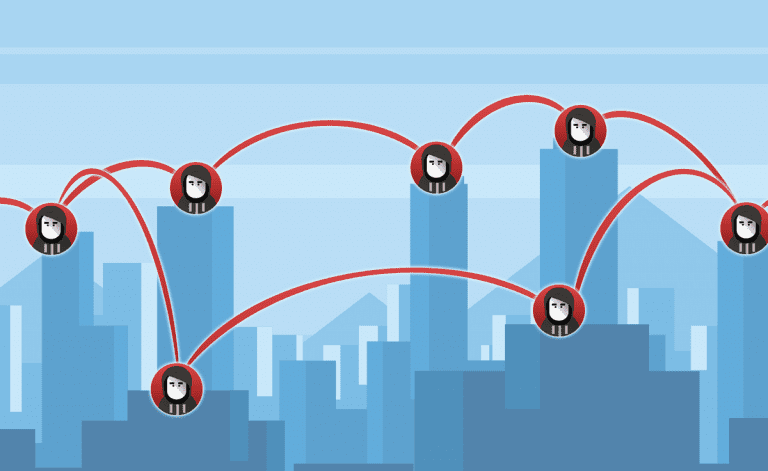Los Angeles law firms face unique disaster recovery challenges that can devastate practices overnight. From wildfires in Malibu to earthquakes across the basin, cyber attacks targeting high-value client data, and power outages affecting Downtown LA’s financial district, your firm’s survival depends on robust disaster recovery and business continuity planning.
The High-Stakes Reality for LA Law Firms
Regulatory and Ethical Imperatives
State Bar Ethics Requirements California State Bar Rule 1.1 requires attorneys to maintain competence in technology safeguarding client information. Rule 1.6 mandates protection of confidential client information, including during disasters. Failure to maintain adequate disaster recovery capabilities can result in disciplinary action, malpractice claims, and bar sanctions.
Client Confidentiality Under Pressure During disasters, maintaining attorney-client privilege becomes exponentially more challenging. You must protect confidential communications while enabling remote access for attorneys and staff. Traditional disaster recovery approaches often compromise security for accessibility—a trade-off that legal practices cannot accept.
Statute of Limitations Concerns Court filing deadlines don’t pause for disasters. Missing critical deadlines due to technology failures can result in malpractice claims exceeding millions of dollars. Your disaster recovery plan must ensure uninterrupted access to case management systems and filing platforms.
LA-Specific Disaster Threats
Seismic Activity Los Angeles sits on multiple fault lines, with experts predicting a 60% chance of a magnitude 6.7+ earthquake within 30 years. The Northridge earthquake demonstrated how quickly physical infrastructure can collapse, making cloud-based recovery essential.
Wildfire Risks Wildfires increasingly threaten LA’s hillside communities where many attorneys live and work. The 2017 Skirball Fire reached the 405 Freeway, while the 2020 Getty Fire forced evacuations in Brentwood and Pacific Palisades. Smoke damage alone can destroy physical servers and networking equipment.
Cyber Threats Targeting Legal Practices Law firms experience cyberattacks at 2.5 times the rate of other industries. LA firms handle high-profile entertainment contracts, real estate transactions, and corporate litigation that make them prime targets for ransomware and data theft.
Infrastructure Vulnerabilities Rolling blackouts, aging electrical grids, and telecommunications failures regularly impact LA business districts. Your disaster recovery plan must account for extended power outages and internet connectivity issues.
Understanding Business Continuity vs. Disaster Recovery
Business Continuity: Keeping Operations Running
Business continuity ensures your law firm continues serving clients during disruptions. This includes maintaining phone systems, email access, document management, case management platforms, and communication tools that enable remote work.
Critical Business Functions for Law Firms:
- Client communication and consultation
- Document review and drafting
- Court filing and deadline management
- Billing and accounts receivable
- Calendar and scheduling systems
- Research and legal database access
Disaster Recovery: Restoring Technology Infrastructure
Disaster recovery focuses on restoring IT systems, data, and infrastructure after major disruptions. This includes recovering corrupted databases, replacing damaged hardware, and restoring network connectivity.
Critical Technology Systems:
- Practice management software
- Document management systems
- Email and communication platforms
- Financial and accounting systems
- Court filing and e-discovery platforms
- Client portals and case tracking
Assessing Your Firm’s Disaster Preparedness
Current State Evaluation
Technology Infrastructure Assessment Most LA law firms discover critical gaps when we conduct comprehensive assessments. Common vulnerabilities include:
- 78% have inadequate backup systems
- 65% lack tested disaster recovery procedures
- 82% don’t have secure remote access capabilities
- 91% haven’t conducted disaster recovery drills
Business Impact Analysis We help you identify which systems and processes are most critical to your practice:
- Revenue-generating activities that cannot be delayed
- Client service functions that maintain relationships
- Compliance requirements that cannot be compromised
- Operational systems that support daily functions
Risk Assessment Matrix We evaluate the likelihood and impact of various disaster scenarios:
- Natural disasters (earthquakes, fires, floods)
- Cyber attacks (ransomware, data breaches)
- Infrastructure failures (power, internet, telecommunications)
- Human factors (key personnel unavailability, human error)
Regulatory Compliance Gaps
Ethics Compliance Review We audit your current practices against State Bar requirements:
- Technology competence standards
- Client confidentiality protections
- Data security measures
- Incident response procedures
Industry Regulation Alignment For firms handling specific practice areas:
- Healthcare law: HIPAA compliance requirements
- Financial services: SEC and FINRA regulations
- Real estate: RESPA and privacy requirements
- Entertainment law: Intellectual property protections
Building Comprehensive Disaster Recovery Plans
Phase 1: Immediate Response (0-4 Hours)
Emergency Notification Systems Automated systems that notify all staff, key clients, and vendors about disasters and operational status. We implement multi-channel communication through email, SMS, voice calls, and mobile app notifications.
Rapid Damage Assessment Standardized checklists that help you quickly evaluate:
- Physical facility damage and accessibility
- Technology infrastructure status
- Staff availability and safety
- Critical system functionality
Client Communication Protocols Pre-drafted communications for different disaster scenarios:
- Service disruption notifications
- Alternative contact information
- Status updates and recovery timelines
- Deadline extension requests when necessary
Phase 2: Emergency Operations (4-24 Hours)
Alternative Workspace Activation We establish backup office locations or fully remote operations:
- Secure remote access to all systems
- Cloud-based phone systems that route to mobile devices
- Virtual meeting platforms for client consultations
- Secure document sharing and collaboration tools
Critical System Restoration Priority-based system recovery that focuses on:
- Client communication systems first
- Case management and calendar systems
- Document access and editing capabilities
- Financial and billing systems
Stakeholder Communications Ongoing updates to clients, courts, opposing counsel, and vendors about your operational status and any impacts on deadlines or scheduled proceedings.
Phase 3: Full Recovery (24 Hours – 30 Days)
Complete System Restoration Systematic recovery of all technology systems and data:
- Full email and communication platform restoration
- Complete document management system recovery
- Integration testing to ensure all systems work together
- Performance optimization for normal operations
Process Normalization Return to standard operating procedures:
- Staff return to normal roles and responsibilities
- Client service levels restored to pre-disaster standards
- Financial and administrative functions fully operational
- Quality assurance and compliance verification
Post-Incident Analysis Comprehensive review of disaster response effectiveness:
- Response time analysis and improvement opportunities
- System performance evaluation during recovery
- Staff feedback on procedures and training needs
- Plan updates based on lessons learned
Technology Solutions for Law Firm Resilience
Cloud-First Infrastructure
Secure Cloud Migration We migrate your systems to enterprise-grade cloud platforms that provide:
- 99.99% uptime guarantees with automatic failover
- Military-grade encryption for data at rest and in transit
- Compliance certifications for legal industry requirements
- Unlimited scalability to handle peak demands
Hybrid Cloud Strategies Combining on-premises and cloud systems for optimal performance:
- Frequently accessed data stored locally for speed
- Complete data replication to cloud for disaster recovery
- Secure synchronization between local and cloud systems
- Automatic failover when local systems become unavailable
Advanced Backup and Recovery Systems
Continuous Data Protection Real-time backup systems that capture every change:
- Zero data loss recovery capabilities
- Point-in-time recovery to any previous state
- Automated backup testing and verification
- Instant recovery for individual files or complete systems
Multi-Tier Backup Architecture Comprehensive backup strategies following the 3-2-1 rule:
- 3 copies of critical data
- 2 different storage media types
- 1 offsite backup location
Immutable Backup Storage Ransomware-proof backup systems that prevent encryption or deletion:
- Air-gapped backup systems physically isolated from networks
- Blockchain-verified backup integrity
- Multi-factor authentication for backup access
- Regular backup restoration testing
Secure Remote Access Solutions
Zero Trust Network Architecture Advanced security that verifies every access request:
- Multi-factor authentication for all users
- Device compliance verification before access
- Encrypted connections for all communications
- Continuous monitoring of user behavior
Virtual Desktop Infrastructure (VDI) Secure remote access that provides full desktop environments:
- Complete application access from any device
- Centralized data storage for security and backup
- Consistent user experience regardless of location
- Simplified device management and security
Mobile Device Management Comprehensive security for smartphones and tablets:
- Remote wipe capabilities for lost or stolen devices
- Encrypted containers for business applications
- Application control and data loss prevention
- Compliance monitoring and reporting
Learn How to Safeguard Your Law Practice in Times of Crisis
What would happen if your law firm’s data was suddenly lost or inaccessible? How long could your practice survive without access to critical client information, case files, or communication channels? These are questions no law firm wants to face, but with the increasing number of cyber threats, natural disasters, and unforeseen emergencies we face, it’s essential to have answers. Do you have specific disaster recovery and business continuity for law firms in place?
In this blog, we’ll break down why disaster recovery and business continuity planning are not just IT buzzwords but integral elements of a robust law firm strategy. We’ll discuss how these plans protect your practice and provide a roadmap to keep your firm prepared for the unexpected.
Why Disaster Recovery and Business Continuity Planning Matter
Protecting Client Trust: In the legal field, trust is everything. Your clients entrust you with their most sensitive information, from personal data to confidential case details. If this information is compromised, not only is the case at risk, but your firm’s reputation could suffer irreparable damage. A solid disaster recovery plan ensures that client data remains safe, even in the event of a major disruption.
Ensuring Legal Compliance: Law firms are bound by strict regulatory requirements regarding data protection and confidentiality. In the event of a disaster, failure to recover and secure data promptly could lead to severe legal consequences. A well-crafted business continuity plan helps ensure your firm remains compliant with industry regulations, even in the face of adversity.
Minimizing Downtime: Time is money in the legal profession. Extended downtime can lead to missed court deadlines, loss of billable hours, and a backlog of work that could take weeks or months to resolve. Disaster recovery strategies minimize downtime, allowing your firm to quickly resume normal operations and continue serving clients without significant delays.
Safeguarding Against Cyber Threats: Cybersecurity threats, including ransomware attacks and data breaches, are on the rise. A disaster recovery plan tailored to law firms includes measures to counteract these threats, ensuring that your firm can quickly recover and restore data in the event of an attack.
Building an Effective Disaster Recovery Plan
Step 1. Assess Your Risks:
Start by identifying the potential risks that could impact your law firm, including natural disasters, cyberattacks, power outages, and even human error. Understanding the specific threats to your practice will help you prioritize the elements of your disaster recovery plan.
Step 2. Prioritize Critical Data and Systems:
Determine which data, applications, and systems are essential to your firm’s operations. This could include client records, case management software, communication systems, and financial records. Your disaster recovery plan should focus on safeguarding and quickly restoring these critical assets.
Step 3. Implement Regular Backups:
Regular data backups are the cornerstone of any disaster recovery plan. Ensure that backups are performed frequently and stored securely, both on-site and off-site. This redundancy ensures that data can be quickly restored in the event of a system failure or cyberattack.
Step 4. Develop a Communication Plan:
In a disaster, clear communication is key. Your plan should include detailed instructions on how to contact employees, clients, and other stakeholders, as well as how to keep everyone informed throughout the recovery process.
Step 5. Test and Update Your Plan Regularly:
A disaster recovery plan is only effective if it works when needed. Regularly test your plan to identify any weaknesses or areas for improvement. As your law firm grows and evolves, update the plan to reflect new systems, data, and potential risks.
Business Continuity Planning for the Firm Running
Step 1. Identify Essential Functions:
Business continuity planning focuses on maintaining the essential functions of your law firm during and after a disaster. This includes not only legal services but also administrative tasks, client communication, and financial management. Identify which functions are critical to your firm’s survival and prioritize them in your plan.
Step 2. Establish a Chain of Command:
In a crisis, clear leadership is essential. Establish a chain of command that outlines who is responsible for making decisions and leading the recovery efforts. This ensures that everyone in the firm knows their role and can act quickly when needed.
Step 3. Create a Temporary Office Plan:
If your physical office becomes inaccessible, how will your firm continue to operate? Consider options for remote work, temporary office spaces, and other solutions that allow your team to continue serving clients even if your primary office is unavailable.
Step 4. Maintain Client Communication:
Your clients need to know that your firm is still operational and capable of handling their cases. Develop a communication strategy that keeps clients informed of your firm’s status and reassures them that their legal matters are being addressed, even in a crisis.
Step 5. Review and Adapt:
Like disaster recovery planning, business continuity planning should be an ongoing process. Regularly review and update your plan to reflect changes in your firm’s operations, technology, and staffing.
Preparing Your Law Firm for the Unexpected
No one likes to think about worst-case scenarios, but being unprepared can have devastating consequences for your law firm. By investing in disaster recovery and business continuity planning, you’re not only protecting your firm’s assets but also ensuring that you can continue to serve your clients when they need you most.
At STG Infotech, we specialize in helping law firms in Los Angeles develop and implement comprehensive IT solutions, including disaster recovery and business continuity plans. While every firm is unique, the goal is always the same: to safeguard your practice, protect your clients, and ensure that your firm remains strong in the face of any challenge.
Find out more about what’s new in the tech world by following our blog!
Click here to schedule a free 15-minute meeting with one of our Business IT Specialists
STG Infotech proudly provides IT Services in Greater Los Angeles and the surrounding areas for all your IT needs.

Let’s dive into your IT!
Schedule a free 15-minute Virtual Meeting with a Business Technology Specialist of STG Infotech and get a closer look into your IT challenges.
We will assess your current IT infrastructure and answer any questions you may have about IT Services or partnering with STG IT.




